Lycaena phlaeas
(Linnaeus, 1761)
-
 Subfamily: Lycaeninae - Lycaenini
Subfamily: Lycaeninae - Lycaenini -
 Wingspan: 24-30 mm
Wingspan: 24-30 mm -
 Flight period: May - Sep (Nov)
Flight period: May - Sep (Nov) -
 Spread: Common
Spread: Common -
 Host plants: Poligonacee (Rumex)
Host plants: Poligonacee (Rumex)
Information
The Lycaena phlaeas also known as Small Copper , is a butterfly of the Lycaenidae with a wingspan of 24-30 mm.
In Italy it is widespread everywhere, including the islands*.
The upper surface of the front wings is bright orange with a dark outer edge and eight or nine black spots.
The hind wings are dark with an orange border. Some females also have a row of blue spots within the orange border, and are known as the caeruleopunctata form.
The bottom pages are similarly shaped but are paler. The black spots on the front wings are outlined in yellow and the dark color is replaced by a light brown, pinkish-gray.
The hind wings are the same pinkish gray brown color with small black dots and a narrow orange border. The hind wings also have a hint of caudal appendages.
It is found in a wide range of habitats from chalky soils to moorlands, as well as in woodlands, glades, embankments, and flower meadows.
Very active butterfly in the hot hours with the males flying to protect small territories that vigorously defend against the rival males, but also from other passing insects.
Even the shadow of a few birds is sometimes enough to get a reaction.
The eggs are laid singly and are visible on the upper surface of the leaves of the host plant.
The young caterpillar of Lycaena phlaeas feeds on the underside of the leaf and creates "windows" leaving the upper epidermis of the leaf intact.
Caterpillars (larvae) are usually green in color, often having a purple stripe along the center of the back and along each side.
Nymphosis occurs in the leaf litter and the pupa is cared for by ants such as Lasius niger, Lasius flavus or Myrmica rubra.
There are two to three generations per year. In exceptional years, a fourth generation occurs; to the south, adults can be seen flying in November.
The species overwinters like a caterpillar.
It feeds on Polygonaceae (gen. Rumex and Polygonum).
* Lepidoptera mundi https://lepidoptera.eu/ - https://fauna-eu.org/
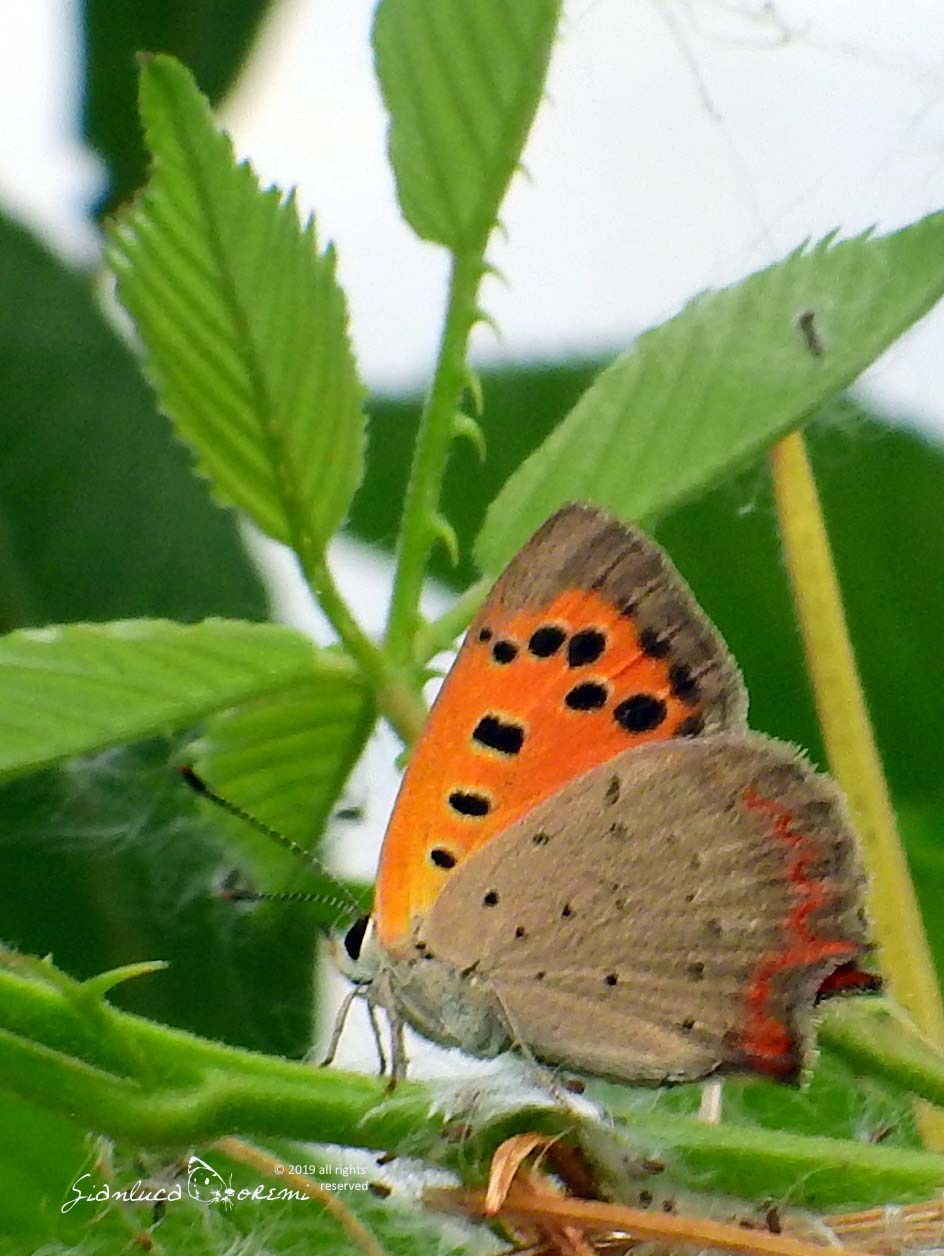
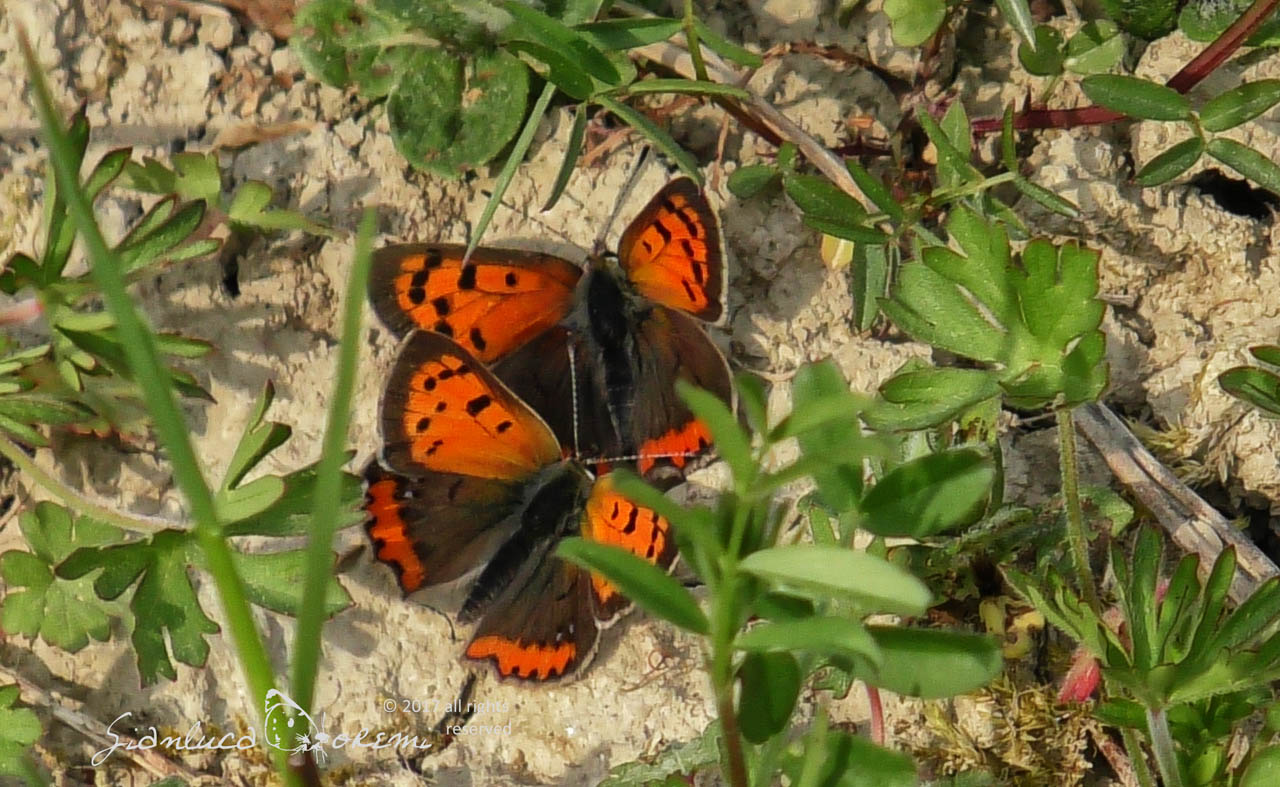
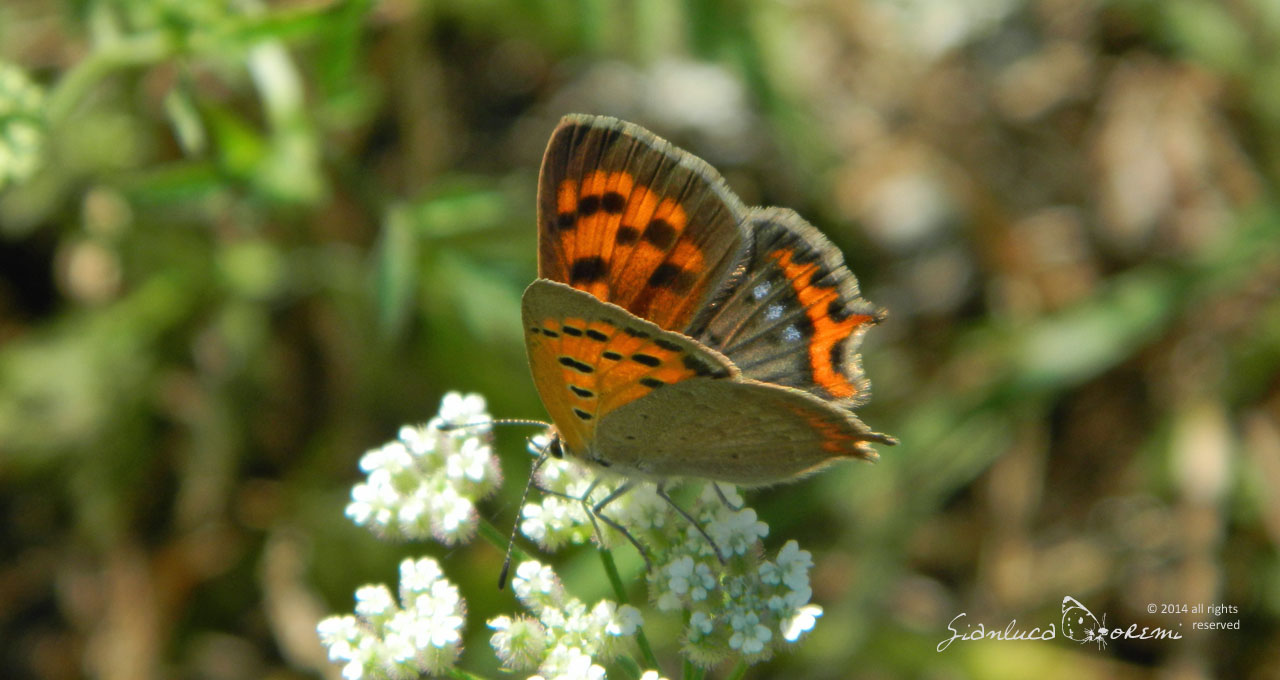
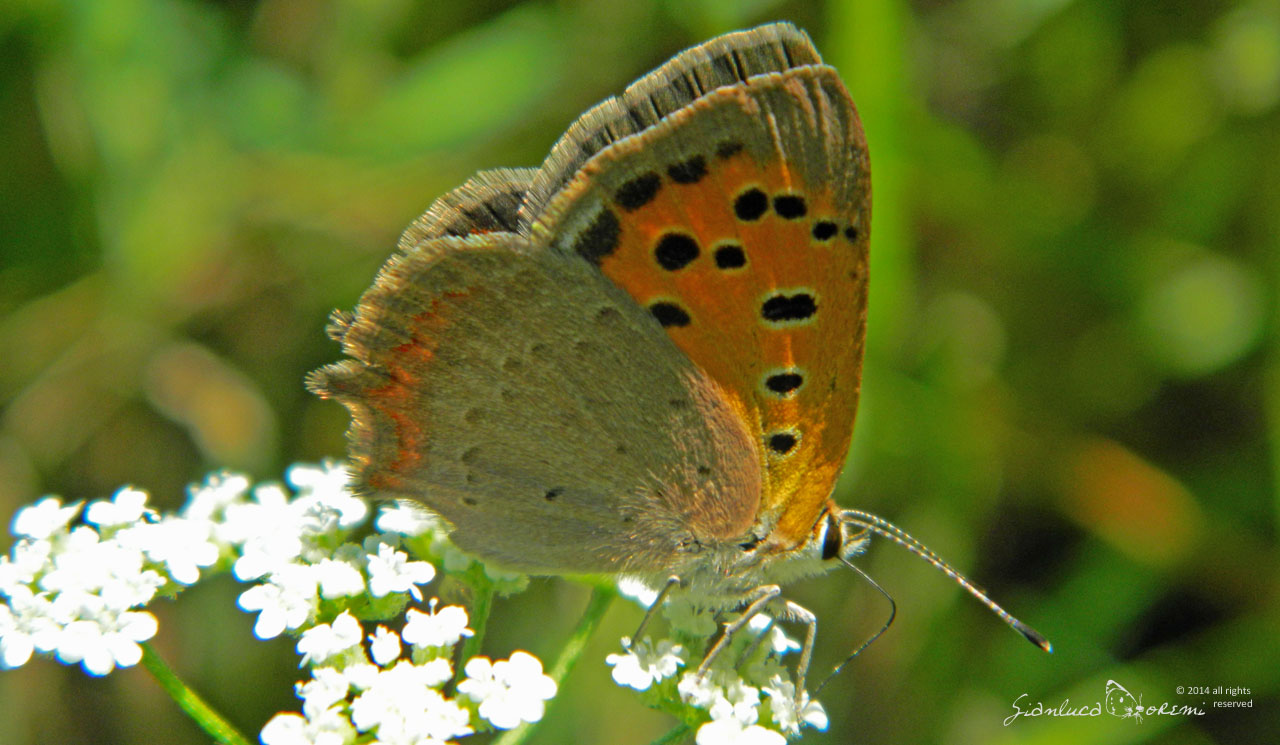




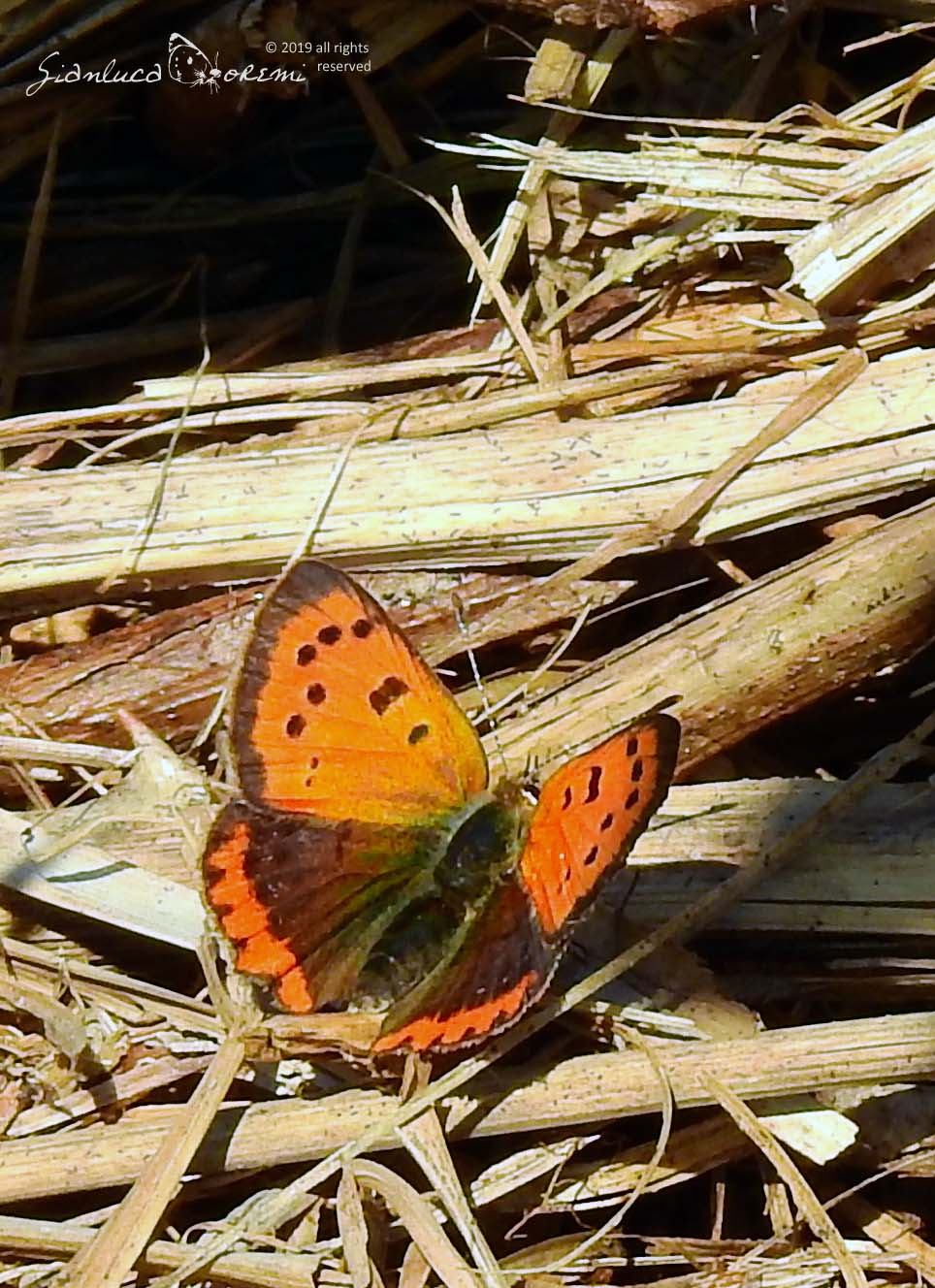
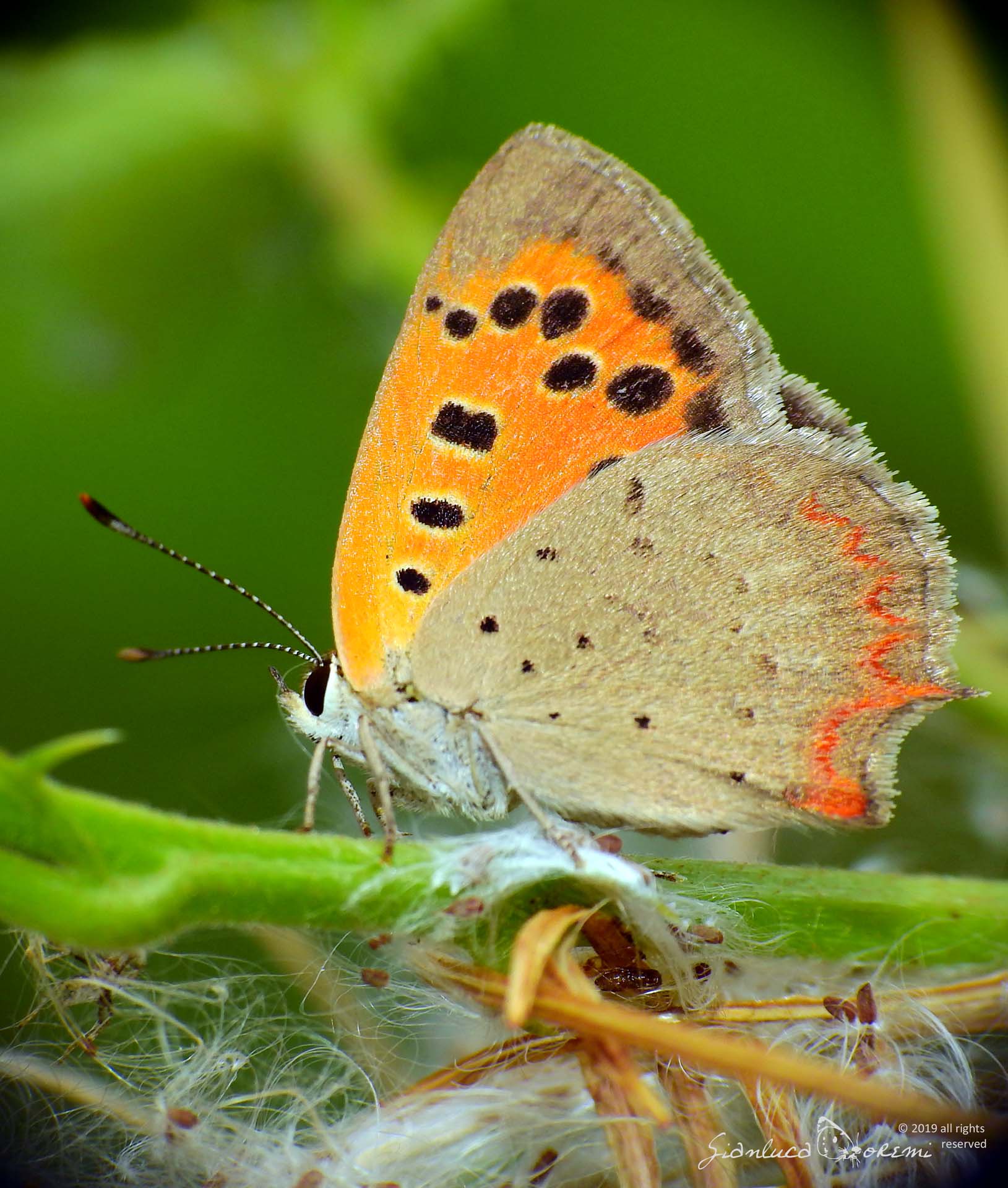

 EN
EN ITA
ITA
Social and publications